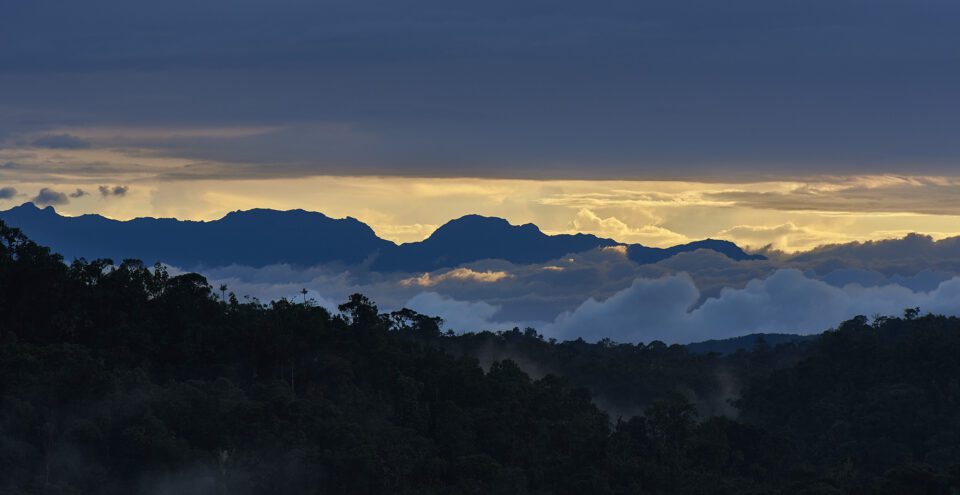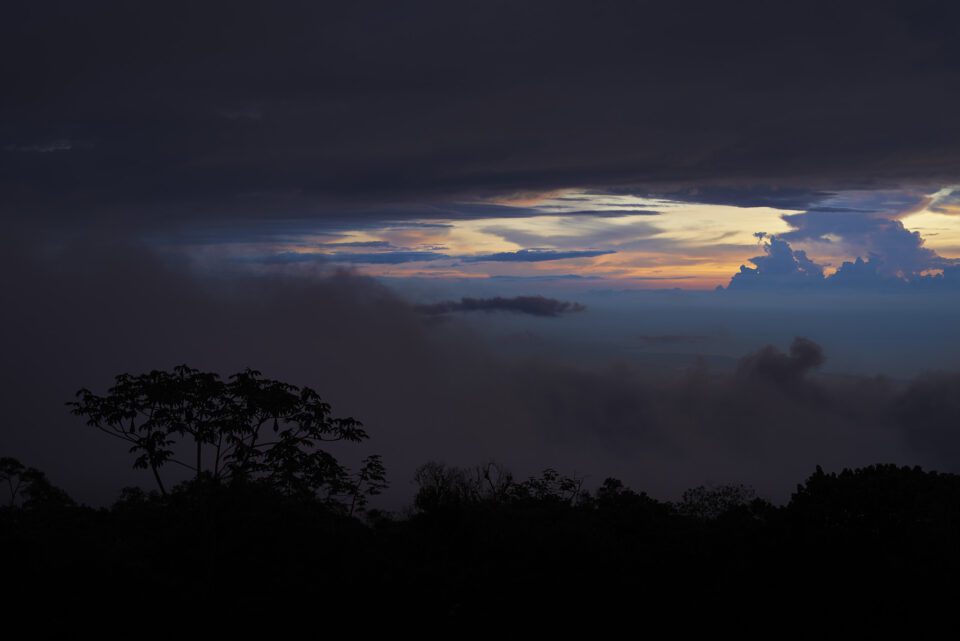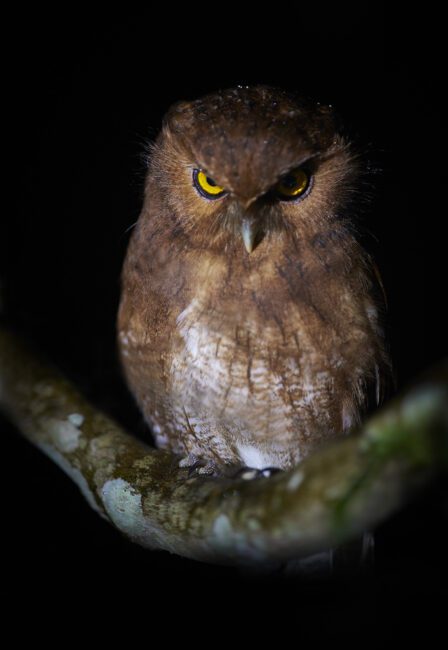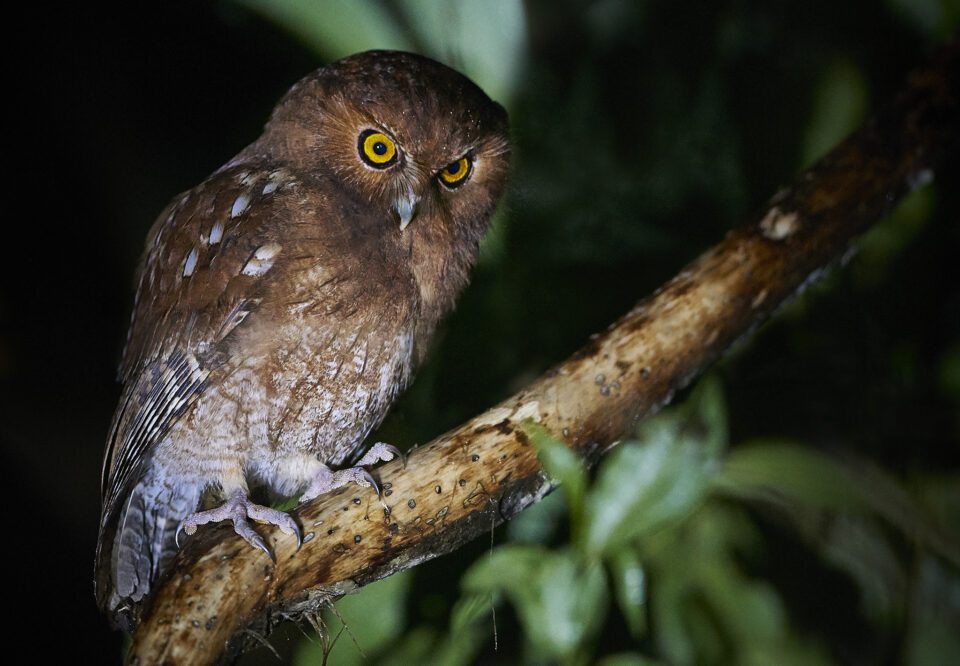 NIKON D750 @ 150mm, ISO 400, 1/400, f/8.0
NIKON D750 @ 150mm, ISO 400, 1/400, f/8.0لقاء نادر مع بومة سانتا مارتا الصراخ
هناك شيء واحد يلفت انتباه المصورين المبتدئين بشأن المناطق الاستوائية – على سبيل المثال، بعض أجزاء أمريكا الجنوبية – وهو مدى غرابة رؤية حيوان. الآن، ربما تهز رأسك وتتساءل عما إذا كنت قد جننت. هل نتحدث عن نفس المناطق الاستوائية؟ إنه مكان يعج بالحياة! نعم، ولكن على الرغم من ذلك، فإن رؤية الحيوانات بنفسك قد يكون أمرًا نادرًا جدًا.
كاميرا نيكون D750 عند 150 مم، ISO 400، 1/400، f/8.0
If the tropics beat the temperate zone for wildlife photography, it is not so much in the number of animals. You could walk for hours and not see a single feather or snake scale, even in an epicenter of biodiversity like the tropical Andes. (No, don’t worry, snakes aren’t really lurking around every corner, much less the venomous ones.)
But what you will find is a species diversity that is unparalleled on the Earth. Take Colombia, for example. Just one country, and it hosts one fifth of all the bird species of the planet. Or its southern neighbor, Ecuador, which has even more biodiversity per square kilometer than Colombia.
It is from that part of the globe – Colombia specifically – where one rare bird species, and a short story about how I photographed it, originates. Colombia’s Sierra Nevada de Santa Marta mountain range lies in the very north of Colombia, somewhat in the shadow of the mighty Andes. For zoologists and botanists, it’s a true paradise – a kind of Ark, packed to the brim with unique species that live nowhere else on Earth. It ranks first among 173,000 nature reserves around the world in biological value, according to research by French scientists.
 NIKON D750 @ 50mm, ISO 100, 1/15, f/6.3
NIKON D750 @ 50mm, ISO 100, 1/15, f/6.3
معظم الناس من أماكن مثل أوروبا وأمريكا الشمالية لديهم توقعات غير واقعية للحياة البرية الاستوائية. بعد كل شيء، لقد نشأنا ونحن نشاهد تلك الأفلام الوثائقية الرائعة من ناشيونال جيوغرافيك أو بي بي سي. هناك الكثير من الحيوانات التي لا يمكنك رؤية الغابة من خلالها! ولكن الواقع مختلف جدا.
إذا تغلبت المناطق الاستوائية على المنطقة المعتدلة في تصوير الحياة البرية، فإن الأمر لا يتعلق بعدد الحيوانات كثيرًا. يمكنك المشي لساعات دون أن ترى ريشة واحدة أو حراشف ثعبان، حتى في مركز للتنوع البيولوجي مثل جبال الأنديز الاستوائية. (لا، لا تقلق، فالثعابين لا تتربص في كل زاوية، ناهيك عن الثعابين السامة).
ولكن ما ستجده هو تنوع الأنواع الذي لا مثيل له على الأرض. لنأخذ كولومبيا على سبيل المثال. دولة واحدة فقط، وتستضيف خمس جميع أنواع الطيور على هذا الكوكب. أو جارتها الجنوبية، الإكوادور، التي تتمتع بتنوع بيولوجي أكبر في كل كيلومتر مربع من كولومبيا.
إنه ذلك الجزء من العالم – كولومبيا على وجه التحديد – حيث ينشأ أحد أنواع الطيور النادرة، وقصة قصيرة حول كيفية تصويري له. تقع سلسلة جبال سييرا نيفادا دي سانتا مارتا في كولومبيا في أقصى شمال كولومبيا، إلى حد ما في ظل جبال الأنديز العظيمة. بالنسبة لعلماء الحيوان وعلماء النبات، إنها جنة حقيقية – نوع من السفينة، مليئة حتى أسنانها بأنواع فريدة لا تعيش في أي مكان آخر على الأرض. وهي تحتل المرتبة الأولى من بين 173 ألف محمية طبيعية حول العالم من حيث القيمة البيولوجية، وفقًا لبحث أجراه علماء فرنسيون.
كاميرا نيكون D750 عند 50 مم، ISO 100، 1/15، f/6.3



